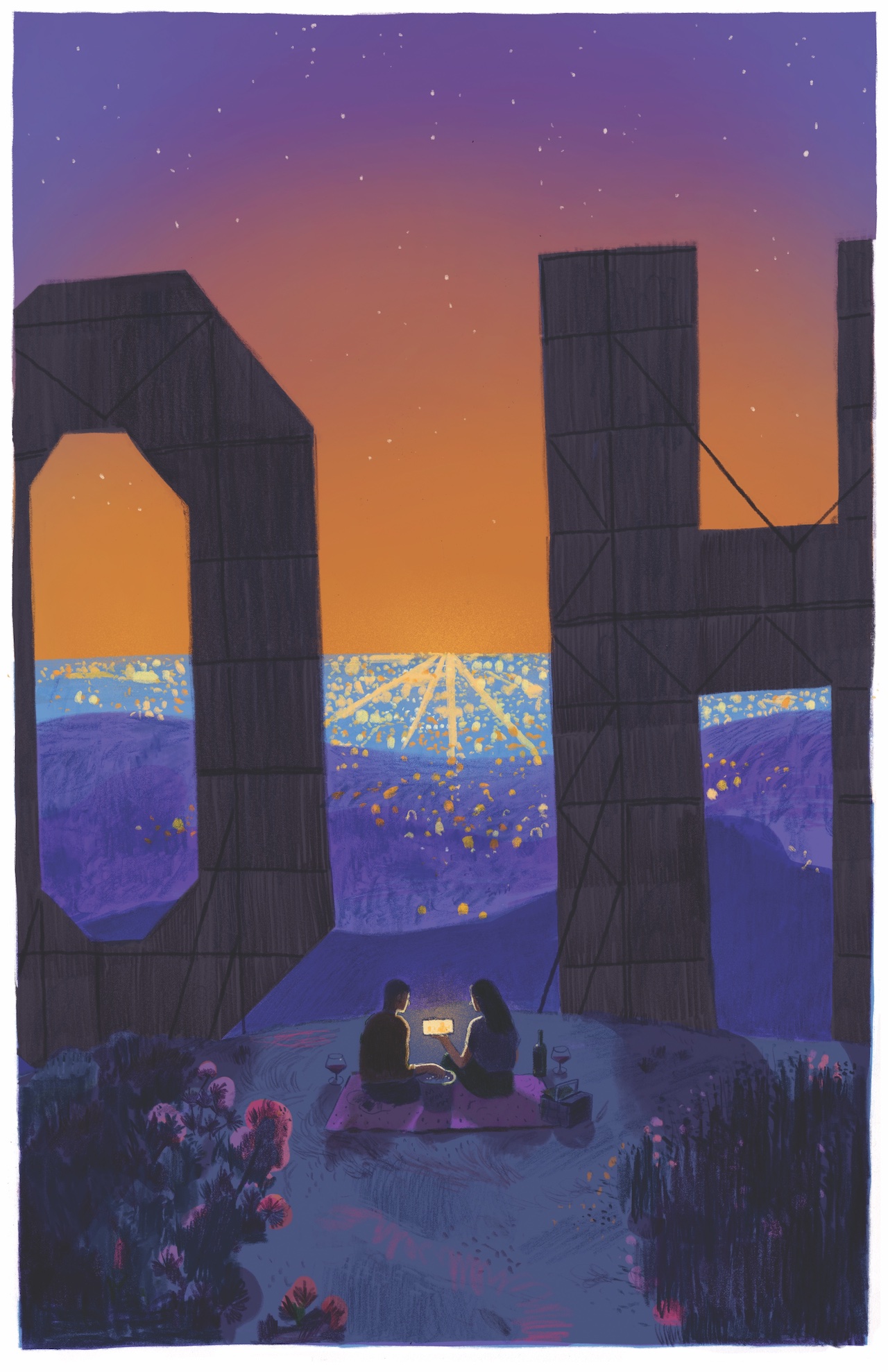

All across Southern California, red carpets have remained mothballed as yet another awards season limps along, crippled by COVID-19. Plagued by recent variants — and rumors of more mutations (flurona, anyone?) — glitz and glamour have remained largely off the menu. But, with streaming sizzling hotter than ever, we might not even miss them.
Hopes for a return to the awards seasons of yore were dashed in December 2021, when the Palm Springs International Film Festival Gala — long seen as the kickoff to awards season — was canceled.
The Golden Globes went virtual after that (perhaps more due to recent bad PR than anything else) and the Grammys were pushed to April “due to uncertainty concerning the Omicron variant.” The Oscars opted for a new hybrid model filming in multiple COVID- safe locations.
Even when the show has gone on, we can all agree that couture, tuxedos, and diamonds feel a little off- note two years into a global pandemic. While efforts to keep the ball rolling are admirable, perhaps we’d be better off celebrating the year’s artistic creations by doing what we’ve been doing for nearly two years: enjoying the fruits of Hollywood’s labor on the biggest screens that our homes can handle.
Thanks to extended lockdowns and more time than ever on our couches, streaming has become second nature for many of us, and the networks have responded with ever-more top-tier content.
Still, while audiences embrace the sweatpants era of entertainment, it remains an adjustment period for those who are used to negotiating full-fledged movie deals. As one high-flying Hollywood producer recently bemoaned, “It’s been so difficult to get features made at the moment. A lot of my [big-screen projects] are sitting in development. My goal is to now be developing material for various platforms.”
But not everyone is crying over the recent turn of events where Hollywood movie-making and viewing are concerned. James Cameron, for example, sees a silver lining. He has described streaming’s overall impact as “chaos,” while still expressing a fondness for the changes being wrought.
Putting his money where his mouth is, Cameron recently told Variety that he looks forward to making six-hour movies well-suited for at-home streaming. “You can stream it for six hours, or you can go and have a more condensed, roller-coaster, immersive version of that experience in a movie theater,” he said. “Same movie. Just, one’s the novel, and one’s the movie. Why not? Let’s just use these platforms in ways that haven’t been done before.”
Or maybe just use the platforms, period. That is what Disney has done with its latest Pixar release. Turning Red — a beautifully produced animation- extravaganza about a Chinese-Canadian girl who transforms into a red panda — skipped theaters altogether and premiered March 11 on Disney+. Disney Media and Entertainment chairman Kareem Daniel said in a statement, “Given the delayed box office recovery, particularly for family films, flexibility remains at the core of our distribution decisions.”
That may be a good thing in light of the fact that the only movies truly crushing it at theaters these days are the ones for which mega returns are almost a fait accompli. Spider-Man: No Way Home, for example, raised eyebrows in a good way when it broke the $100 million mark during its first week of release. But even the mighty Spielberg faltered when his long-awaited West Side Story (a Golden Globe winner) scored rave reviews from critics and indifference from theatergoers who generated only $30 million in box office.
Warner Bros., which owns HBO Max, found a drastic work-around for tepid returns on theatrical releases. All of the company’s movies over the course of 2021 came out on the service simultaneous with theatrical releases.
In response to that surprise move, director Christopher Nolan groused, “Some of our industry’s biggest filmmakers and most important movie stars went to bed thinking they were working for the greatest movie studio and woke up to find out they were working for the worst streaming service.”
Nevertheless, there are others who maintain that streaming is the vehicle that saved Warner Bros. in that it pressed the studio to put movies into theaters as planned, rather than pushing release dates like its competitors did. The strategy certainly helped HBO: Globally, HBO and HBO Max had nearly 70 million subscribers when the third quarter of 2021 ended, which represented growth of 12.5 million. What happens next, however, remains to be seen.
Respected entertainment journalist Mark Harris recently made a point that would call the ’22 strategy into question. “The number of non-genre adult dramas that have cracked $50M [through theatrical box office] is ZERO,” he tweeted. “The world of 2019, in which ‘1917’ made $160M, ‘Ford v. Ferrarri’ made $120 M, and ‘Parasite’ made $52 M, is gone.”
All of Hollywood is reckoning with this reality, and it goes beyond revenues (which A-list stars have been, in some cases, loudly complaining about and even suing over). The cancellation of awards galas, caution exercised for premieres, and a general loss of the need to dress up for glimmering events have all seriously impacted below-the-line workers: the stylists, makeup artists, and hair teams that make those red carpet looks happen.
One thing is difficult to argue: Hollywood’s most impactful sequel of early 2022 has been “The Pandemic: Part III.” Let’s hope Part IV is not already in post-production.
To read more, pick up GRAZIA USA’s March 2022 issue on newsstands and email [email protected] to subscribe.













